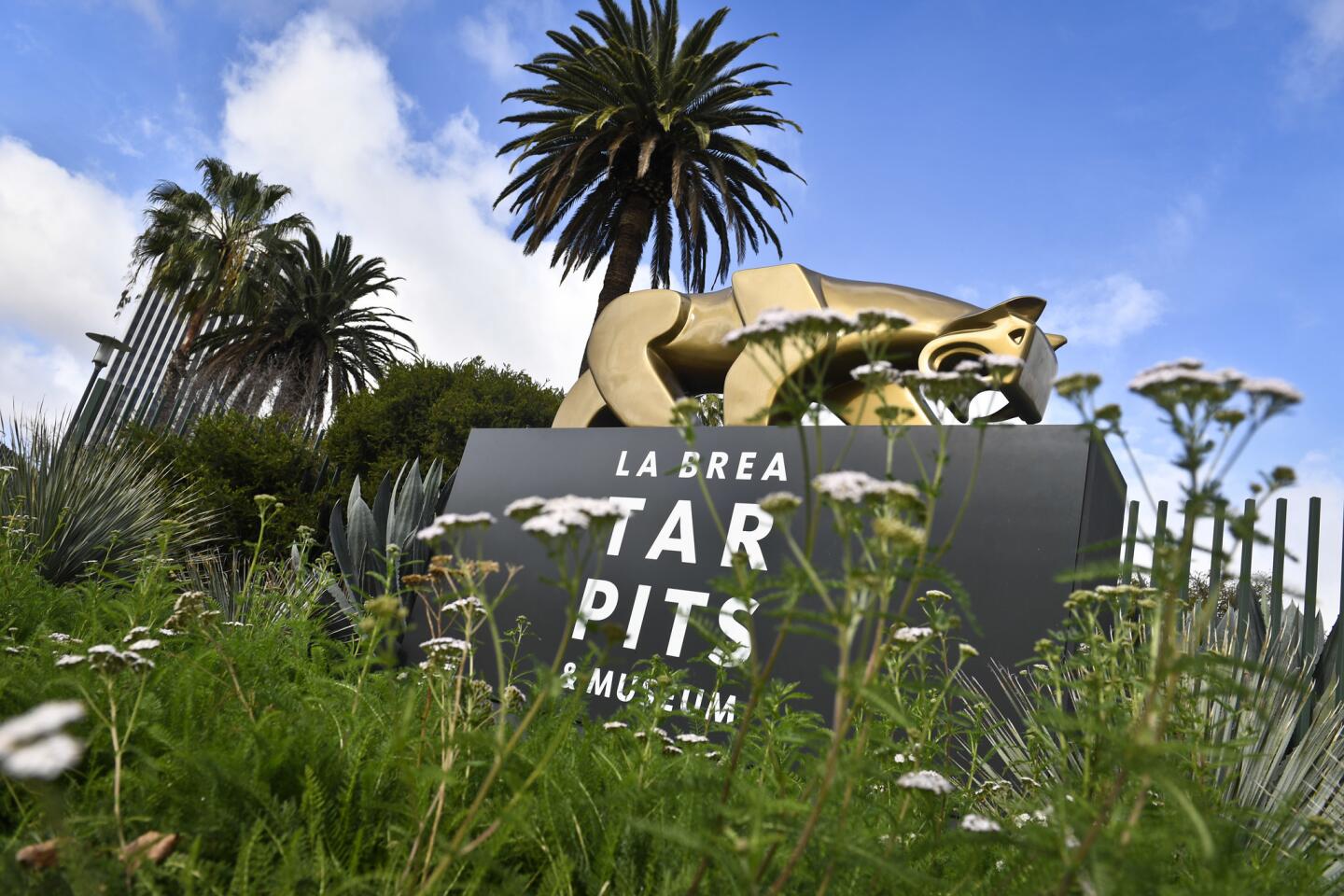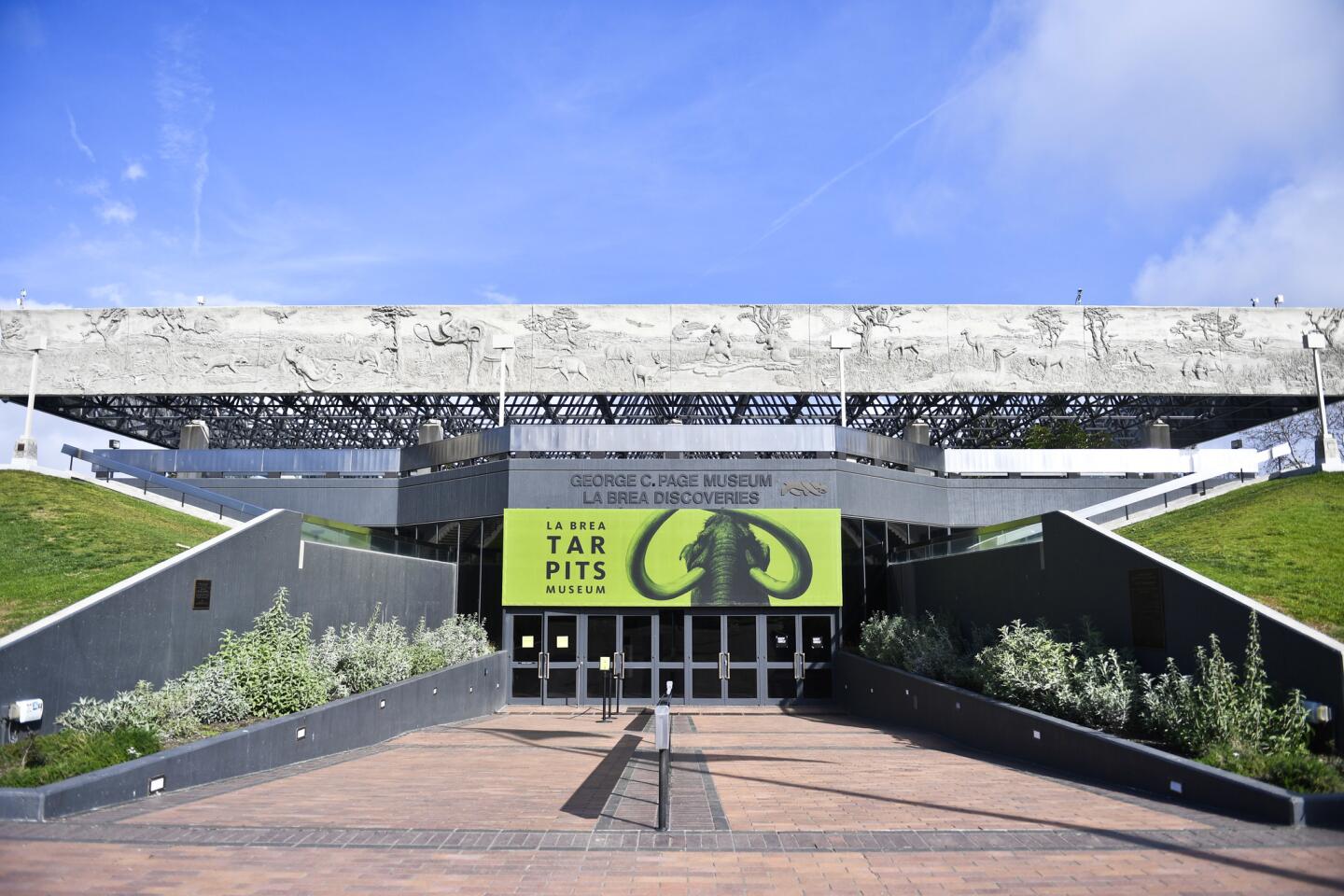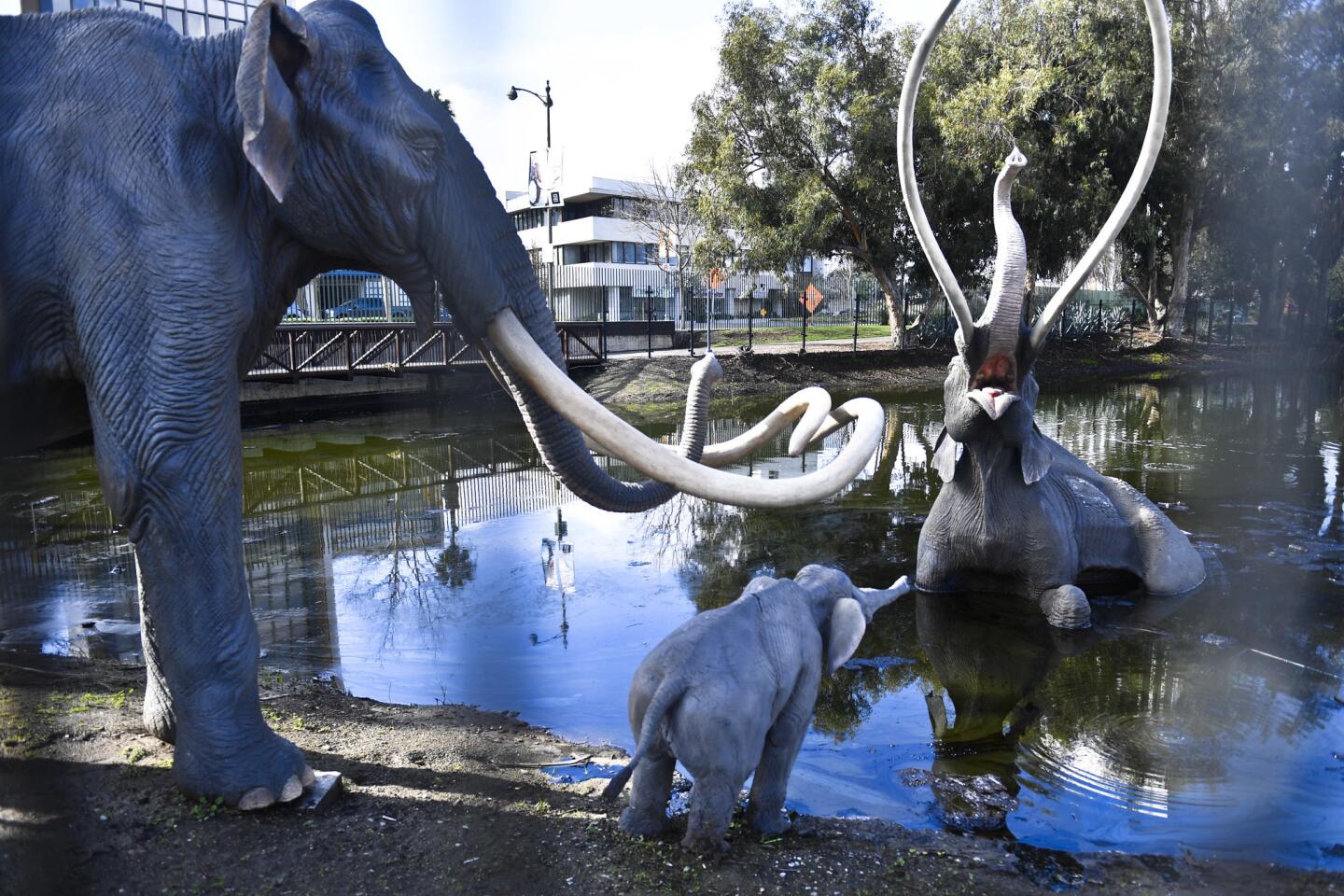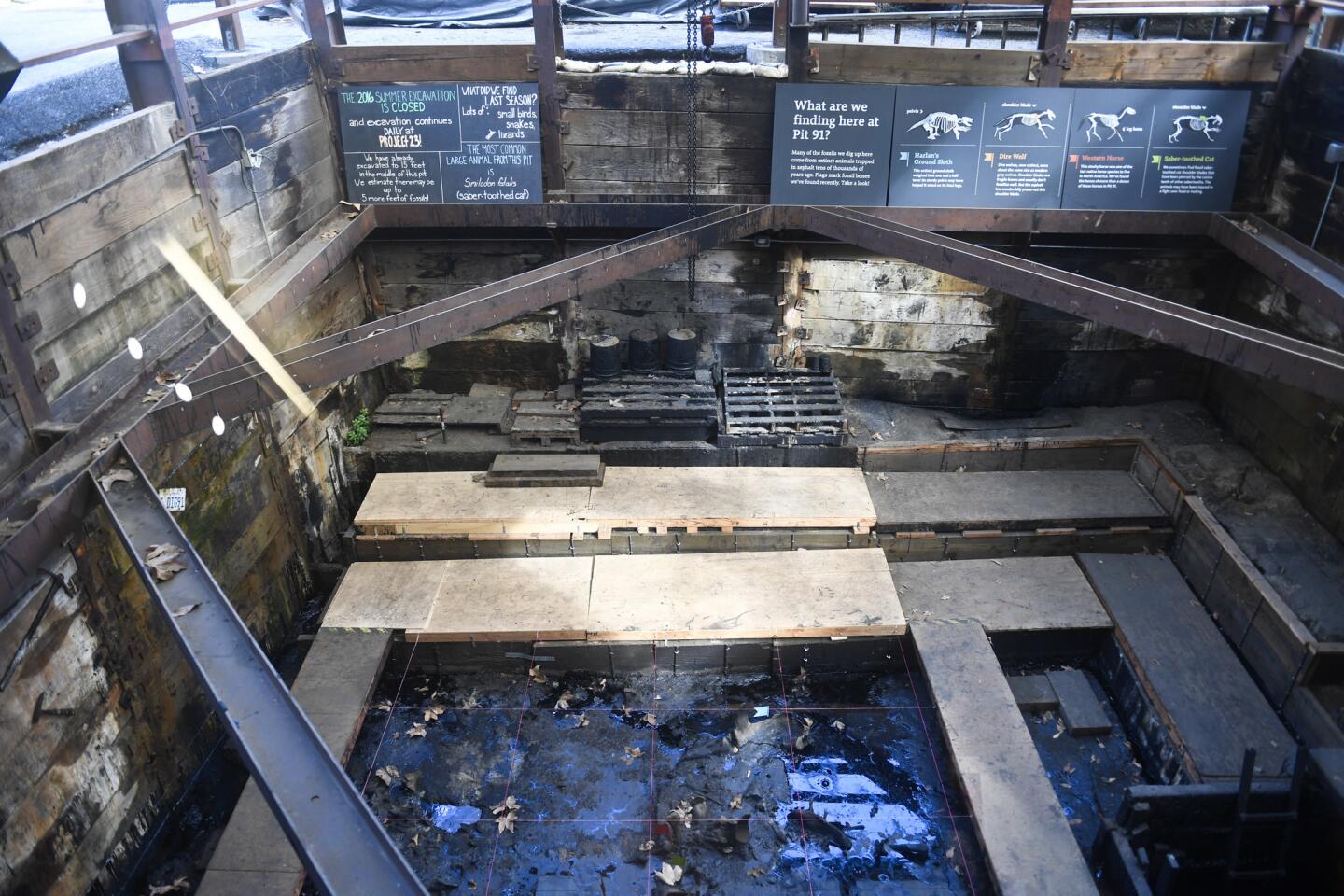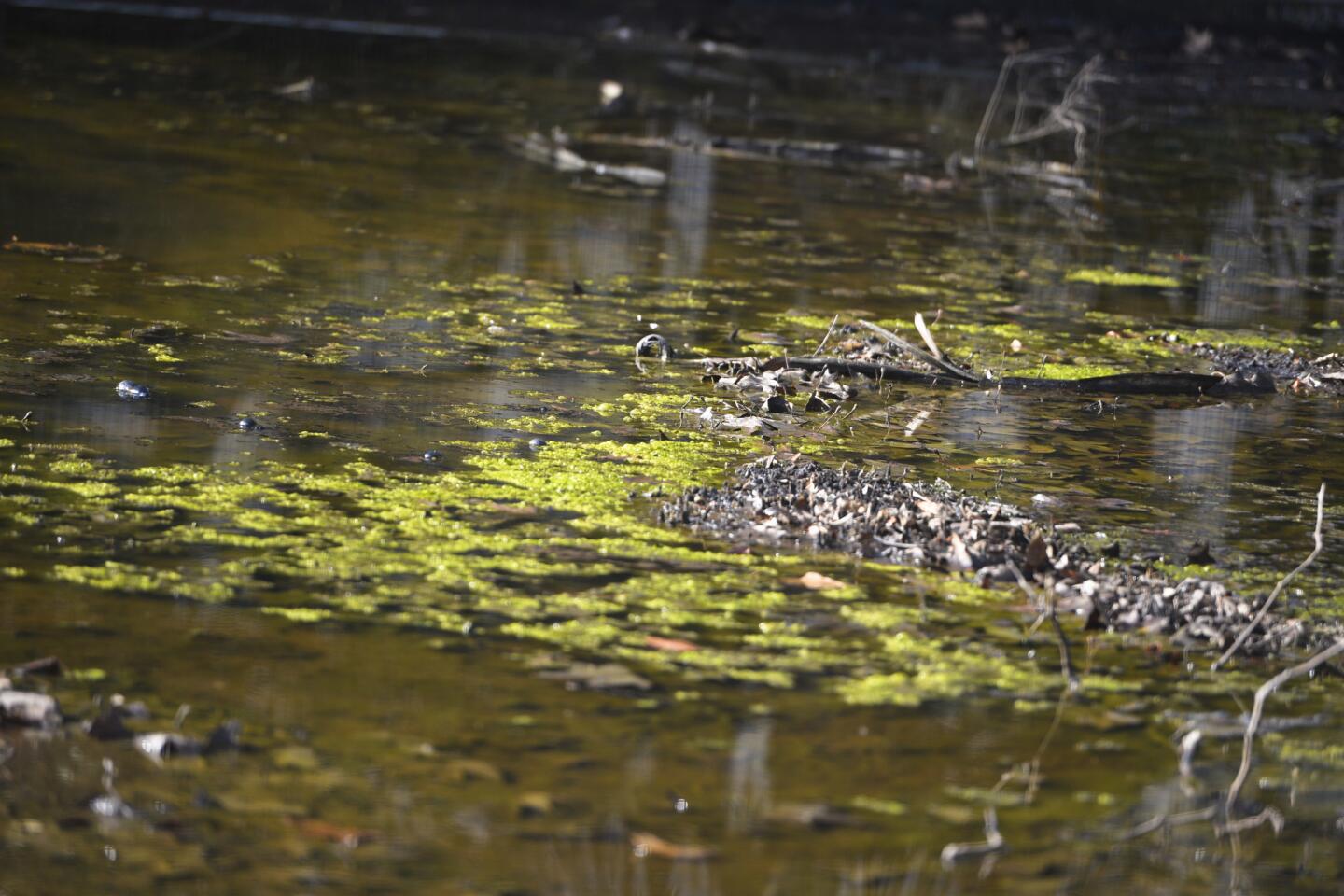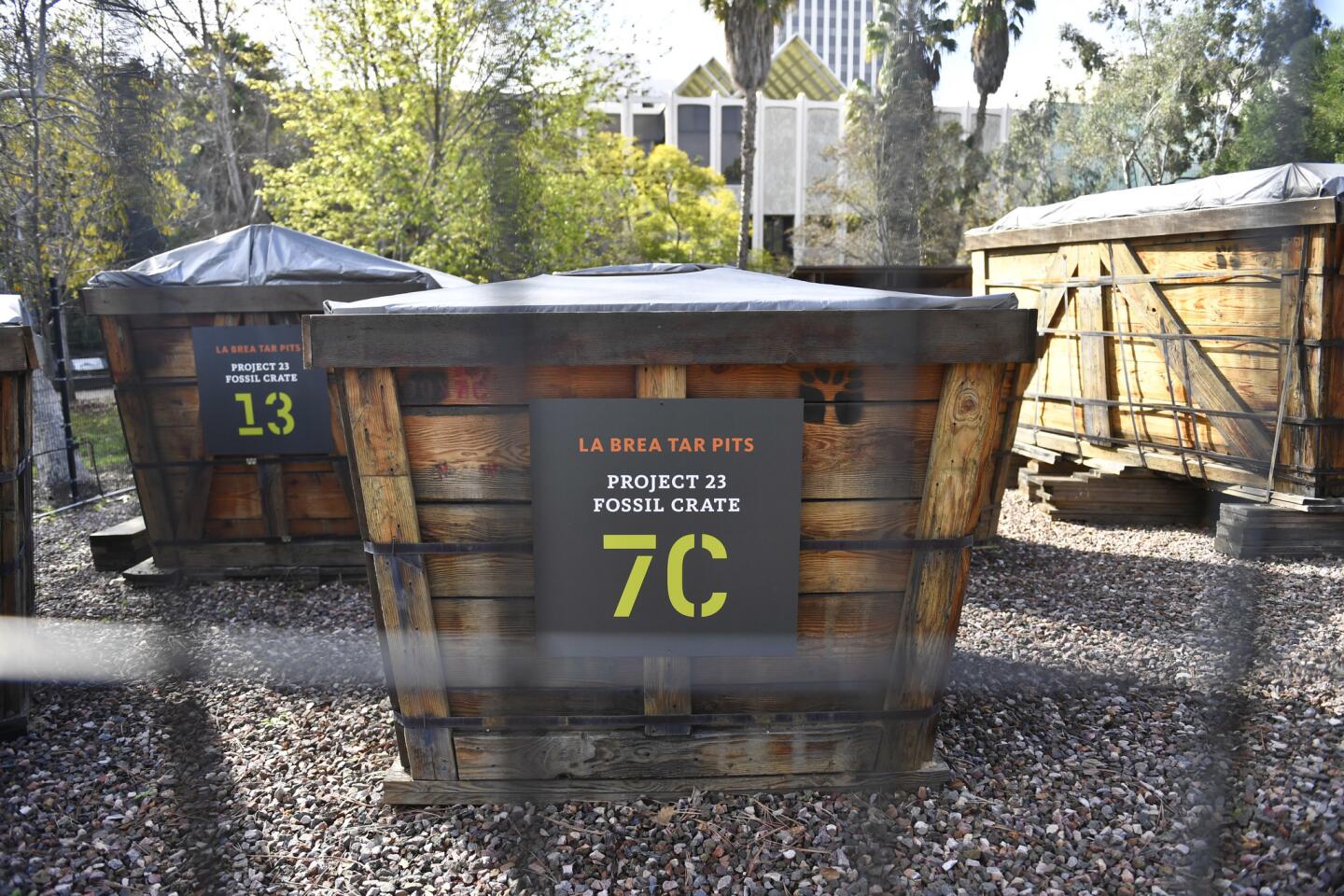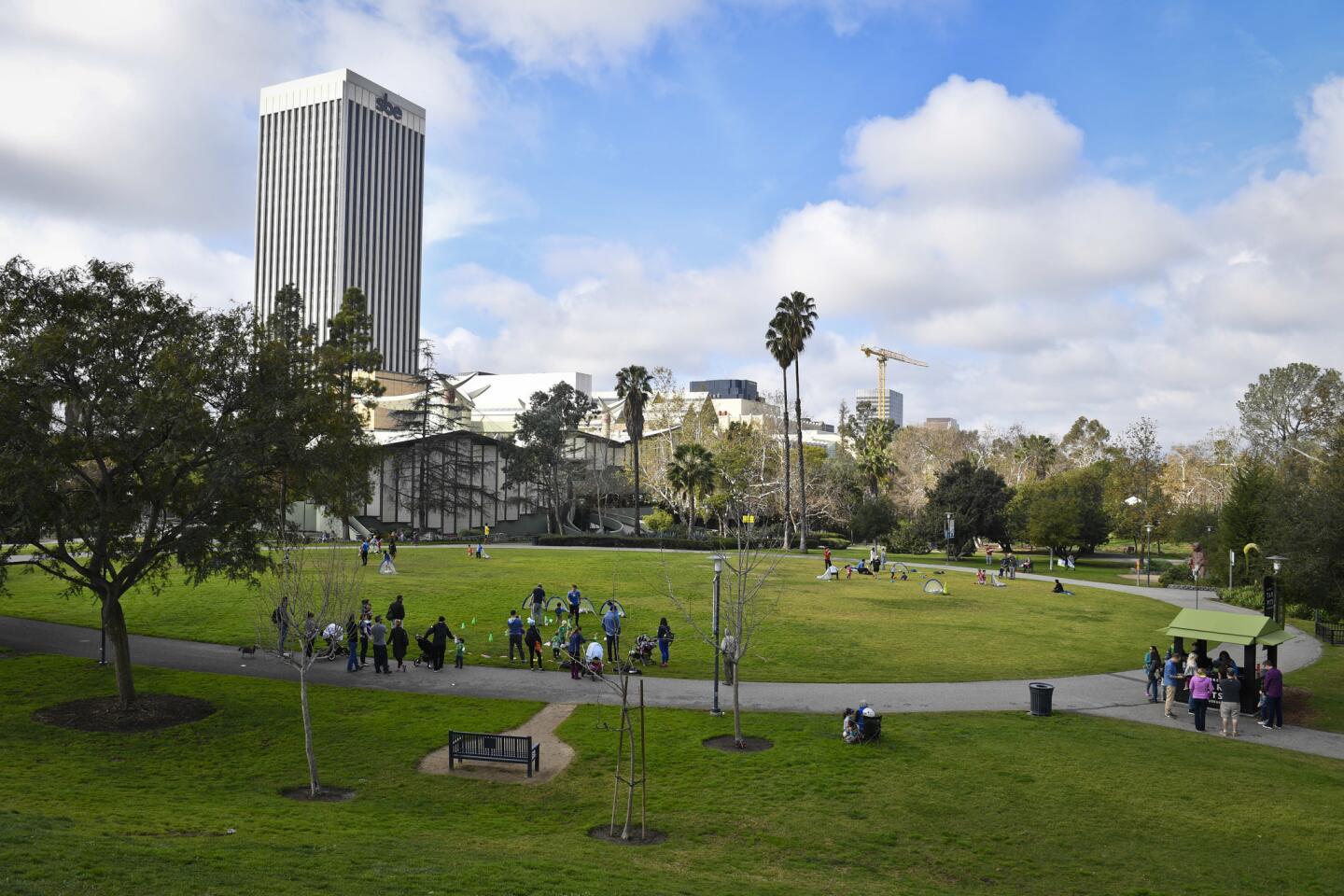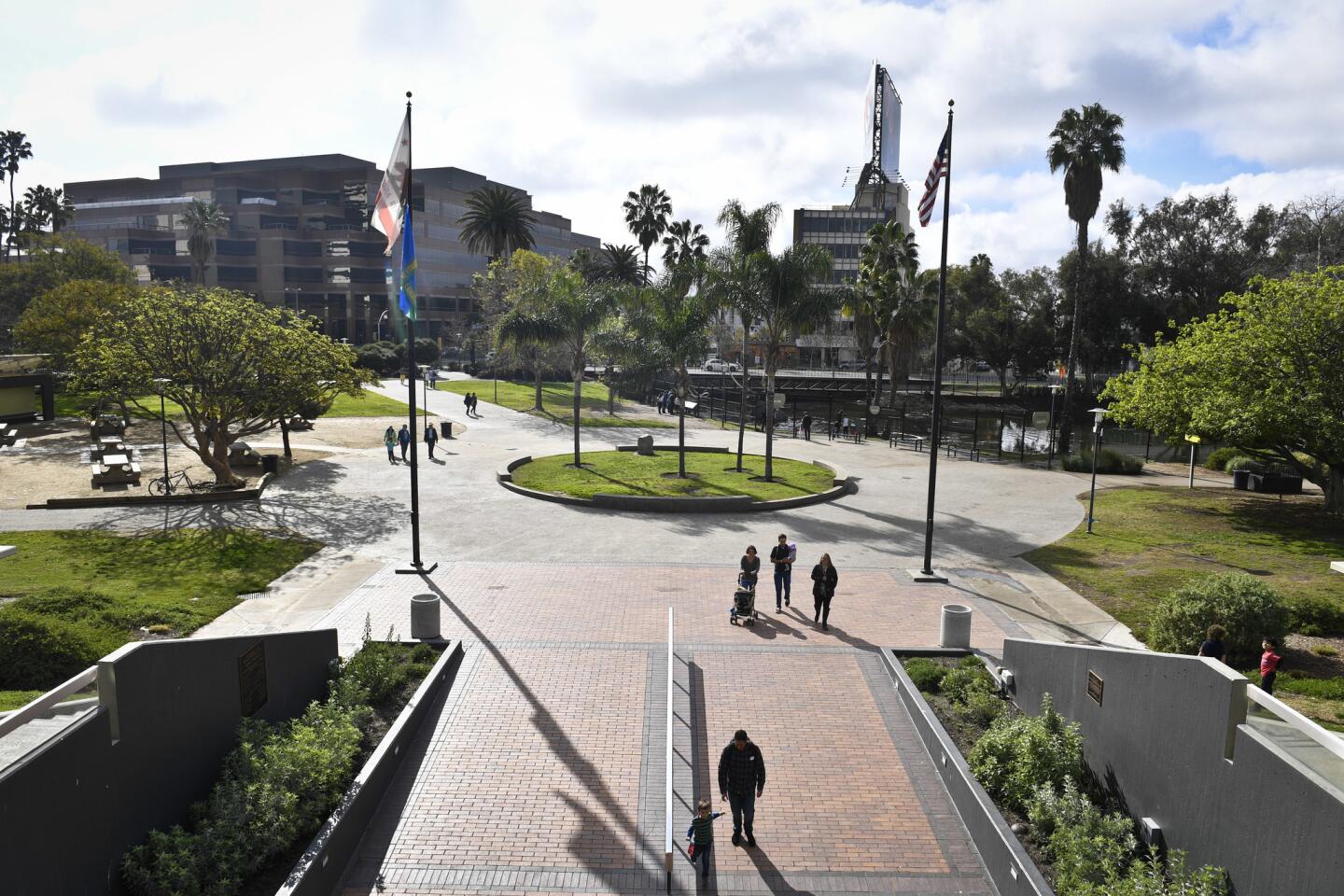Take a great L.A. walk around the La Brea Tar Pits
Animals strolling here in past millenniums got stuck in the muck, but today the La Brea Tar Pits’ open-air museum is a great place to take a walk.
Stroller- and wheelchair-friendly, it’s a good way to soak up some science while getting some exercise — and add some culture by visiting some of the more popular attractions at nearby museums.
For the record:
4:00 p.m. March 13, 2017This article and a caption in the photo gallery describe statues of animals stuck in the muck as showing mastodons and woolly mammoths. The statues are of Columbian mammoths. Also, two captions in the gallery incorrectly describe the excavations at the tar pits as archaeological digs; they are paleontological.
Find more great L.A. Walks — maps included >>>
1. Begin by entering the park from the corner of Wilshire Boulevard and South Curson Avenue. Bear left to visit Lake Pit, where statues of mastodons struggle to free themselves from the still-active tar.
2. Bear right as you near the end of the big pit, following the paved walkway as it circles a wide lawn, passes the Pleistocene Garden, and leads you toward a series of smaller tar pits. Some are active digs, where new bones and relics are being pulled from the soil.
3. Continue bearing right, past Pit 9, a small outdoor amphitheater and Pit 13.
4. Dead ahead is one of the city’s most curious art installations. “Levitated Mass,” created by artist Michael Heizer, is a 340-ton boulder, poised above a 456-foot-long concrete trench, set in a 2-acre field of decomposed granite. It’s part of the Los Angeles County Museum of Art. You may go under it or around it.
5. At the far side of the rock, leave the park and turn left onto Fairfax Avenue. Walk a block, and turn left again onto Wilshire Boulevard. Across the street is the colorful Petersen Automotive Museum — a must for anyone interested in cars, motorcycles or L.A. history.
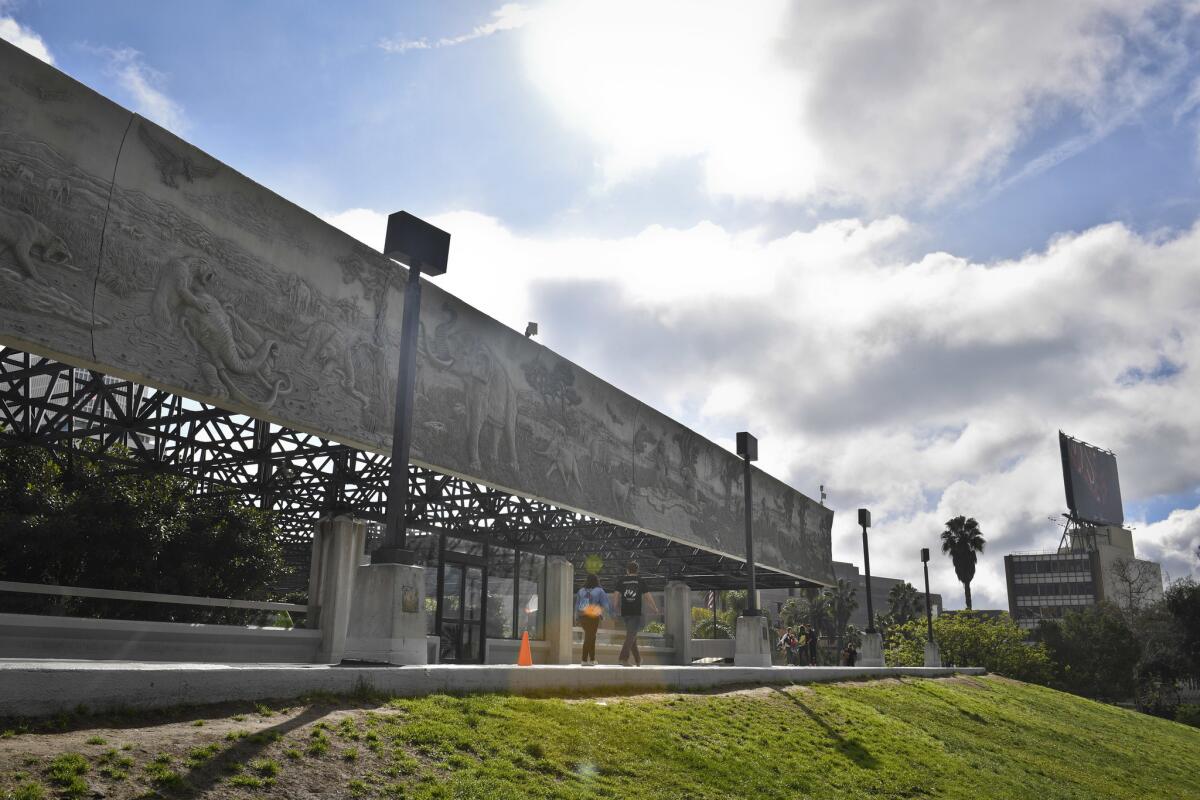
6. Continuing along Wilshire, visit “Urban Light,” the late Chris Burden’s whimsical forest of restored, 1920s cast iron street lamps. Just past is a collection of statues by the French sculptor Auguste Rodin, including studies from his masterful “Burghers of Calais” monument.
7. Just past the Rodins, enter the Tar Pits park once more through a gate. To the left are more outdoor sculptures, including works by Alexander Calder. Farther in, to the left, are the Pavilion for Japanese Art and shops, cafes and public restrooms that serve LACMA. To the right is Lake Pit. Curve around this to return to the beginning of the walk.
The stats
Distance: 1.3 miles
Difficulty: 1 on a scale of 1 to 5
Duration: 1 hour
Details: Ample free and metered street parking. (Or $12 paid parking.) Dogs on a leash are OK.
Fleming is the author of “Secret Stairs: A Walking Guide to the Historic Staircases of Los Angeles” and “Secret Walks: A Walking Guide to the Hidden Trails of Los Angeles.” Each month, he leads a free walk at one of his favorite spots in Southern California. Find out more at his Facebook page, Secret Stairs. He can also be reached at charles.fleming@latimes.com.
MORE L.A. WALKS
This short, steep hike takes you high above Burbank
Strolling around the lakes in El Dorado Park in Long Beach
This hike takes you to an (allegedly) haunted mansion: The Cobb Estate in Altadena
